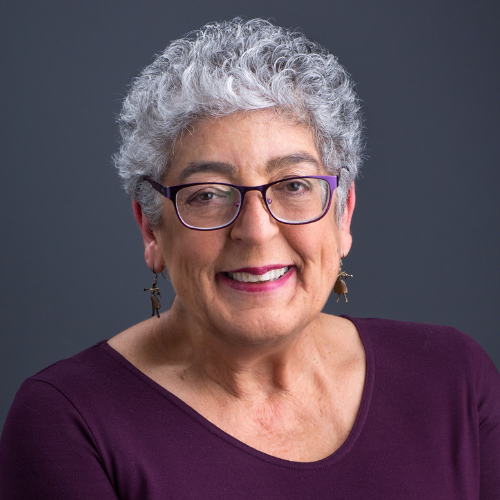
The Salk Institute for Biological Studies │ La Jolla, California
For applying genetics to the understanding of how plants sense and respond to light, and for inspiring new strategies for utilizing plants to combat climate change.
Most forms of animal life, from microorganisms to human beings, are mobile creatures, able to move freely from one place to another as conditions require. Plants, however, don’t enjoy that luxury—wherever a plant finds itself, it needs to adapt to its environment in order to survive. How do plants manage that challenging feat? What genetic mechanisms enable them to survive and thrive in different conditions of light and temperature? These are the questions that Joanne Chory has sought to answer, focusing particularly on the role of light and shade.
It’s been known for thousands of years that plants respond to light, and in the 20th century, scientists gained the tools and knowledge to understand photosynthesis and the role of light-sensitive molecules in plant cells. But knowing that plants can sense and respond to light doesn’t explain the mechanism of how light shapes the growth, development, and environmental adaptation of plants. Chory realized this question was a perfect problem for investigation: what are the genetic signaling pathways that plants use to control light sensing? She chose the humble weed Arabidopsis thaliana, a small flowering plant in the mustard family, as a model organism because of its ideal characteristics for genetic study. Chory became among the first to use Arabidopsis as a plant model system, and in particular, to apply detailed molecular genetics to plant signaling pathways.
Born in Boston, Chory majored in biology at Oberlin College, where she graduated with honors. She went on to earn her Ph.D. at the University of Illinois at Urbana-Champaign, then worked on a post-doctoral fellowship at Harvard Medical College before joining the Salk Institute in 1988. Although she is now best known as a geneticist, her early interest was in microbiology, and her work in that field led her to a fascination with the power and potential of genetics.
By creating mutant lines of Arabidopsis that could grow well in the dark—when a normal plant would wither—she was able to find the particular gene encoding the ability of the plant to sense light. She then discovered that a steroid signaling pathway controls it—a big surprise because steroid signaling was thought only to happen in animals. Thus, she defined the first steroid hormone pathway in plants. Chory extended these findings to uncover other light-signaling pathways and how they operate, including the genes involved and the role of the special light-harvesting parts of plants: the chloroplasts. She found that plant photoreceptors can detect and use light at every wavelength, each light-sensing molecule activating different signaling pathways. She also studied Arabidopsis mutants that exhibit defective shade avoidance behavior: a normal plant will grow away from shade, toward light. Building on that work, she focused on auxin, which was appreciated to be an important plant hormone, although its exact function was unclear. Chory identified the auxin biosynthetic pathway in higher plants, while also uncovering the role of other plant hormones called brassinosteroids.
Chory has built upon this work that provided vital information on how plants manage to adapt to different environments as the foundation for new ways to fight climate change. As the founder of the Harnessing Plants Initiative at the Salk Institute for Biological Studies, she is working on methods to engineer plants to better cope with the ever-changing conditions of a warming planet. Her goal is to develop crop and wetland plants that can remove carbon from the atmosphere and lock it underground in deep root systems by converting it to the molecule suberin—a naturally occurring carbon molecule already found in plant roots. Using this natural, readily scalable approach to carbon sequestration, Chory projects that as much as 20 percent of human-generated CO2 could be removed from Earth’s atmosphere every year.
Those achievements have brought her many honors, including election to the National Academy of Sciences, the American Academy of Arts and Sciences, and the Royal Society. Other awards include the 2000 L’Oreal-UNESCO Award for Women in Science, the 2012 Genetics Society of America Medal, the 2018 Gruber Prize in Genetics, and the 2018 Breakthrough Prize in Life Sciences. In 2003, she was named one of the Scientific American 50 Research Leaders in Agriculture. These are only a few of the formal accolades she has earned, but perhaps even more impressive is the respect and admiration of her scientific peers, who widely praise her originality, productivity, leadership, and pioneering contributions to the field of plant science.
Perhaps Chory’s most impressive achievement, however, is the example of her own resilience. She was diagnosed with Parkinson’s disease in 2004, and despite her struggles with the illness, she remains driven by her passion for her work and continues active research. Her courage and persistence, added to her professional accomplishments, have made her an inspiring role model for younger generations of scientists.
Joanne Chory’s scientific contributions have already changed the course of her own field and biology overall. Now she is concentrating on extending and applying those contributions to find a practical and workable solution for perhaps the most profound challenge facing human civilization. Her vision of using plants to battle climate change has the potential to profoundly impact the world far beyond the realm of science. If so, it will represent her greatest achievement of all.

